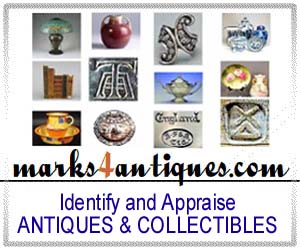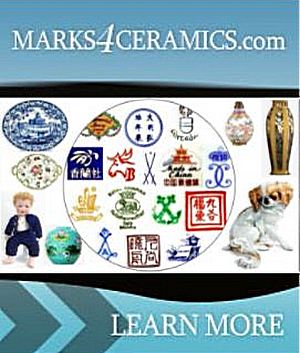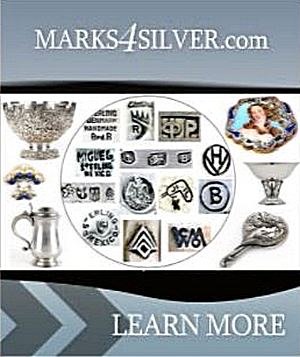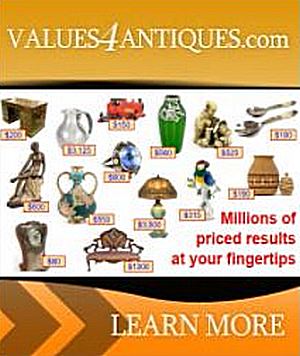Appraise and find values for
KOREAN BRONZE TYPE SINGING BOWL...
From
marks4antiques.com
- The most updated price guide and makers' marks research online
As a member, you have access to a team of experts
and assistance is always available to you for free
An example from the millions of items in our Price Guide:
KOREAN BRONZE TYPE SINGING BOWL AND PALE CLAIR-DE-LUNE TYPE GLAZED CHARGERKorean Bronze Type Singing Bowl and Pale Clair-de-lune Type Glazed Charger,...
This is an example from our
values4antiques price guide
We do not buy or sell any items
See more price guides
Check our other research services:
IDENTIFY WORLDWIDE MAKERS' MARKS & HALLMARKS
marks4ceramics:
Porcelain, Pottery, Chinaware, Figurines, Dolls, Vases...
marks4silver
:
Silver, Jewelry, Pewter, Silverplate, Copper & Bronze...
Explore other items from our
Antiques & Collectibles Price Guide
NORTH KOREAN "ARIRANG" GOUACHE PROPAGANDA[more like this]
KOREAN KOHIKI TYPE EARTHENWARE PEAR[more like this]
SIGNED JAPANESE EDO COPPER ARTICULATED[more like this]
KOREAN CELADON PORCELAIN BOX & COVER,[more like this]
KOREAN CLAIR-DE-LUNE TYPE PORCELAIN[more like this]
(3) ANTIQUE CHINESE / KOREAN POURING[more like this]
(4) ANTIQUE JAPANESE CHAWAN TEA BOWLS[more like this]
KOREAN BRONZE TYPE SINGING BOWL AND[more like this]
KOREAN JEOSON ROYAL IRON INCENSE BURNER[more like this]
TWO KOREAN SILLA PEDESTAL VESSELS. Most[more like this]
KOREAN SILLA TYPE POTTERY VESSEL. Possibly[more like this]
TWO KOREAN COVERED POTTERY JARS. Kawa[more like this]
KOREAN POTTERY VESSEL. Kawa type, possibly[more like this]
GROUP OF KOREAN FIGURAL POTTERY. Most[more like this]
THREE KOREAN POTTERY VESSELS. Kawa and/or[more like this]
Four pieces Asian pottery: Chinese footed[more like this]
SCROLL PAINTING - CH'AEKKORI - Korean[more like this]
Four Bronze Mirrors one "TLV" type,[more like this]
US WWII General Mark W. Clark Scarf[more like this]
This list is limited to only a few results.
Many more items are available to our members in our
Price Guide!





